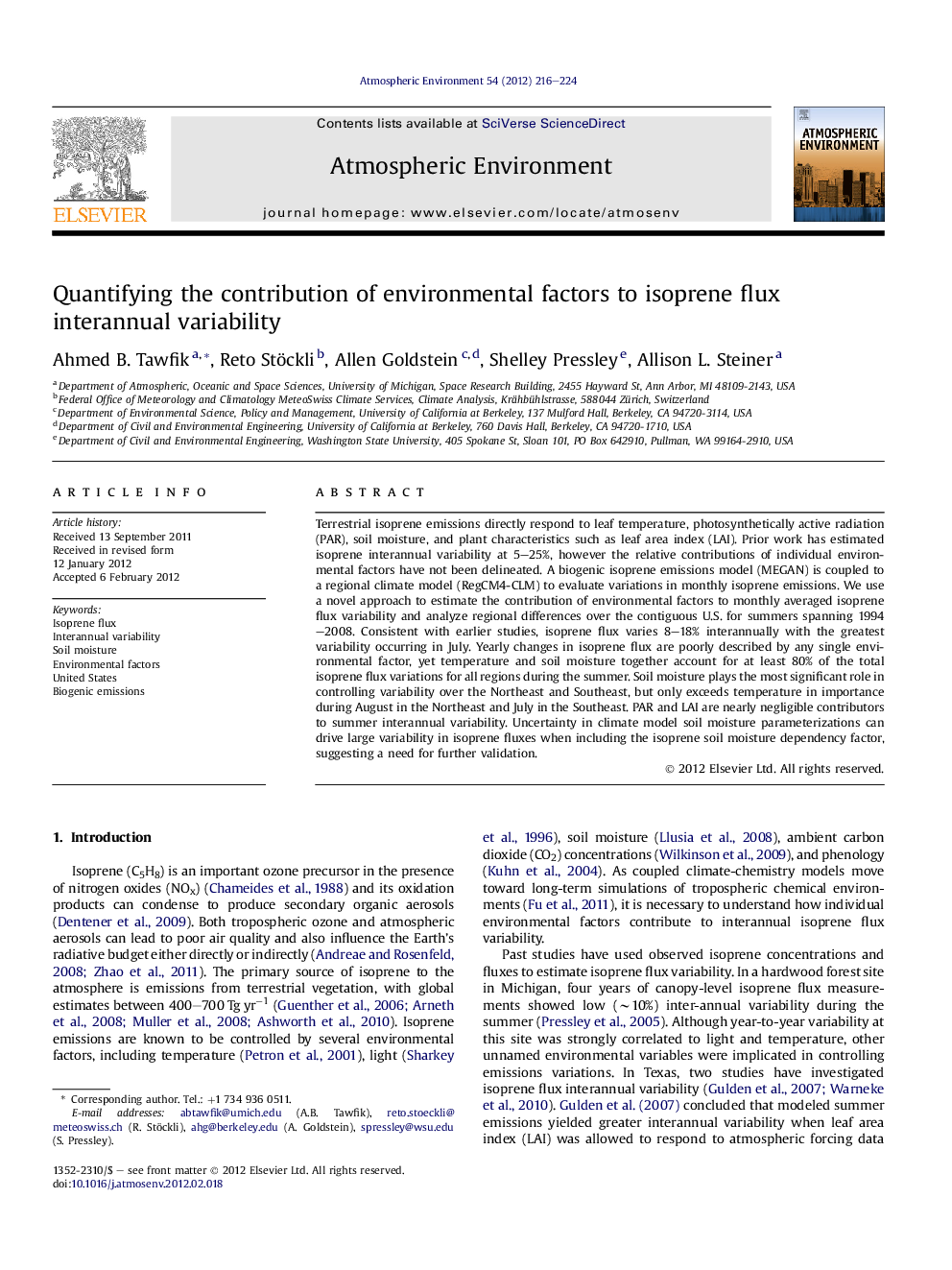| Article ID | Journal | Published Year | Pages | File Type |
|---|---|---|---|---|
| 4438789 | Atmospheric Environment | 2012 | 9 Pages |
Terrestrial isoprene emissions directly respond to leaf temperature, photosynthetically active radiation (PAR), soil moisture, and plant characteristics such as leaf area index (LAI). Prior work has estimated isoprene interannual variability at 5–25%, however the relative contributions of individual environmental factors have not been delineated. A biogenic isoprene emissions model (MEGAN) is coupled to a regional climate model (RegCM4-CLM) to evaluate variations in monthly isoprene emissions. We use a novel approach to estimate the contribution of environmental factors to monthly averaged isoprene flux variability and analyze regional differences over the contiguous U.S. for summers spanning 1994–2008. Consistent with earlier studies, isoprene flux varies 8–18% interannually with the greatest variability occurring in July. Yearly changes in isoprene flux are poorly described by any single environmental factor, yet temperature and soil moisture together account for at least 80% of the total isoprene flux variations for all regions during the summer. Soil moisture plays the most significant role in controlling variability over the Northeast and Southeast, but only exceeds temperature in importance during August in the Northeast and July in the Southeast. PAR and LAI are nearly negligible contributors to summer interannual variability. Uncertainty in climate model soil moisture parameterizations can drive large variability in isoprene fluxes when including the isoprene soil moisture dependency factor, suggesting a need for further validation.
► A regional climate model is coupled with a widely used isoprene emissions model. ► Control of environmental factors on isoprene flux variations is quantified. ► No single environmental factor can explain yearly variations in isoprene flux. ► Temperature and soil water factors jointly account for >80% of variations. ► Light and leaf area index variations are negligible contributors to variability.
